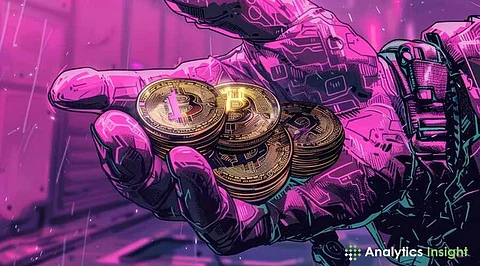

The GameFi (Game Finance) sector has emerged as one of the fastest-growing areas of blockchain technology, blending gaming with decentralized finance (DeFi) to create interactive experiences where players can earn real-world rewards. By incorporating play-to-earn (P2E) mechanics, NFTs, and blockchain-powered marketplaces, GameFi projects have transformed the gaming landscape and redefined how people view gaming as a source of income.
As we reach 2025, GameFi is entering a new phase of significant growth due to advancements in Web3 technologies, improved immersive gameplay experiences, and the growth of the metaverse. Here's how the GameFi projects set the stage for a new order in gaming.
Star Atlas is one of the most eagerly anticipated blockchain games since its release. Designed on the Solana blockchain, this space exploration game has brought breathtaking graphics with strategic gameplay.
What makes Star Atlas unique is its fully functioning in-game economy, where players can own starships, trade rare resources, and participate in governance through its POLIS token. Star Atlas promises to remain a leader in the GameFi space as the game expands open-world features and strengthens player-driven economies.
Axie Infinity was one of the first games in GameFi, which demonstrated the earning potential of blockchain gaming. After some tough years, 2025 marks the revival of Axie Infinity with improved gameplay mechanics, better graphics, and a shift towards sustainable earnings for players.
Axie Infinity: Origins, with the new tokenomics to balance the ecosystem, breathed interest into this classic GameFi project. As Axie continues to innovate, such that casual gamers, as well as DeFi enthusiasts, ensure its place in this niche of a project to keep an eye on.
Illuvium is another name that has captured the attention of blockchain gamers. The AAA-quality RPG game enables the players to explore expansive landscapes, battle mythical creatures (Illuvials), and collect NFTs that have real-world value.
The new advancements that Illuvium made in 2024 are the completely decentralized governance system and the game modes with co-op, allowing the player to team up on a quest to obtain rare assets. The emphasis it provides for immersion into gameplay and P2E is something to highlight and distinguish in the GameFi space.
Big Time is rewriting the rules of multiplayer RPGs by combining fast-paced action with NFT ownership. The game allows players to obtain in-game assets, including cosmetic items and weapons, and trade them on blockchain-based marketplaces.
Cross-platform compatibility has been adopted by Big Time by 2024, allowing users to connect their progress across multiple devices. Its emphasis on accessibility and seamless user experience has made it the go-to choice for both the traditional gamer and the blockchain enthusiast.
Gala Games also leads in this GameFi space, with games available on many blockchain-based platforms. One of the best features is its decentralized business model, which provides the gaming community with ownership over their in-game items—as NFTs—and the choice to vote in governance polls.
Expanding this space during the next quarter of 2025 by releasing several new games would further enhance its brand identity as a leader within GameFi. Gala looks like a top runner with great innovation and a strong sense of community.
Otherside is a project by Yuga Labs, the creators of Bored Ape Yacht Club. It is a metaverse that combines NFTs to create a virtual world where users can interact, build, and explore. By 2024, Otherside has integrated multiple blockchain protocols to create a seamless cross-chain experience.
Interoperability is the platform's main focus, combined with its NFT-driven economy, making it a central hub for Web3 gaming and metaverse enthusiasts alike.
GameFi projects of 2025 are about earning tokens and providing interesting and high-quality gaming experiences. Several key trends define the sector:
Interoperability: Cross-chain compatibility enables asset transfers between games and platforms seamlessly.
Immersive Gameplay: Projects are focusing on providing AAA-quality graphics and sophisticated mechanics to attract mainstream gamers.
Sustainability: Games are shifting toward long-term economic models that ensure token stability and player rewards over time.
The GameFi revolution is reshaping the gaming industry, transforming players into investors and communities into economies. Projects like Star Atlas, Axie Infinity, Illuvium, and Otherside have set the standard for what blockchain gaming can achieve in 2025.
As the line between gaming and finance gets increasingly blurred, the future of GameFi will deliver entertaining experiences yet also be capable of earnings. For gamers, developers, and investors alike, the future of GameFi promises to be exciting and rewarding in ways not thought possible before.
